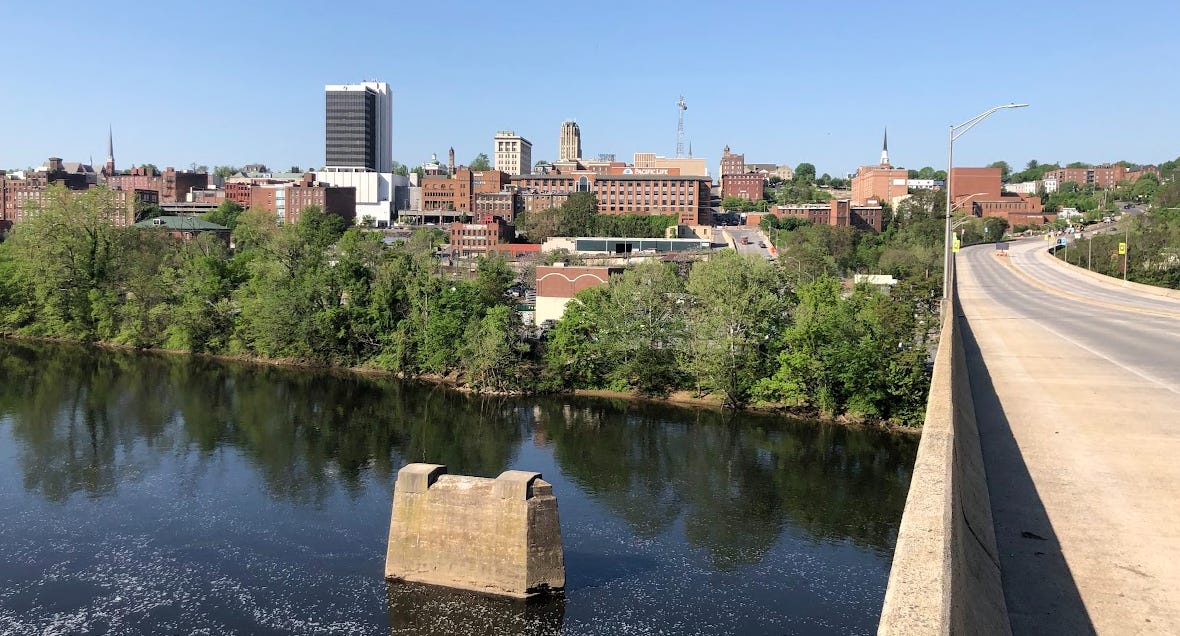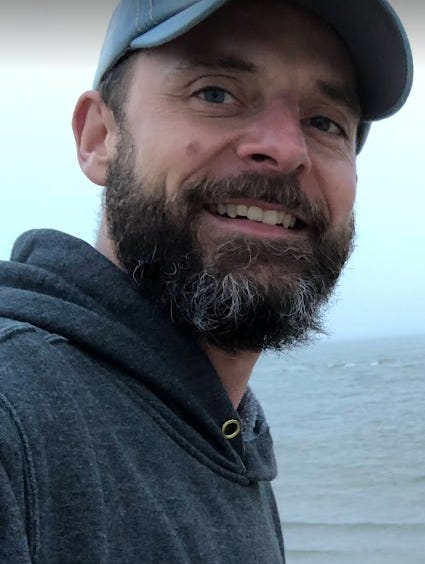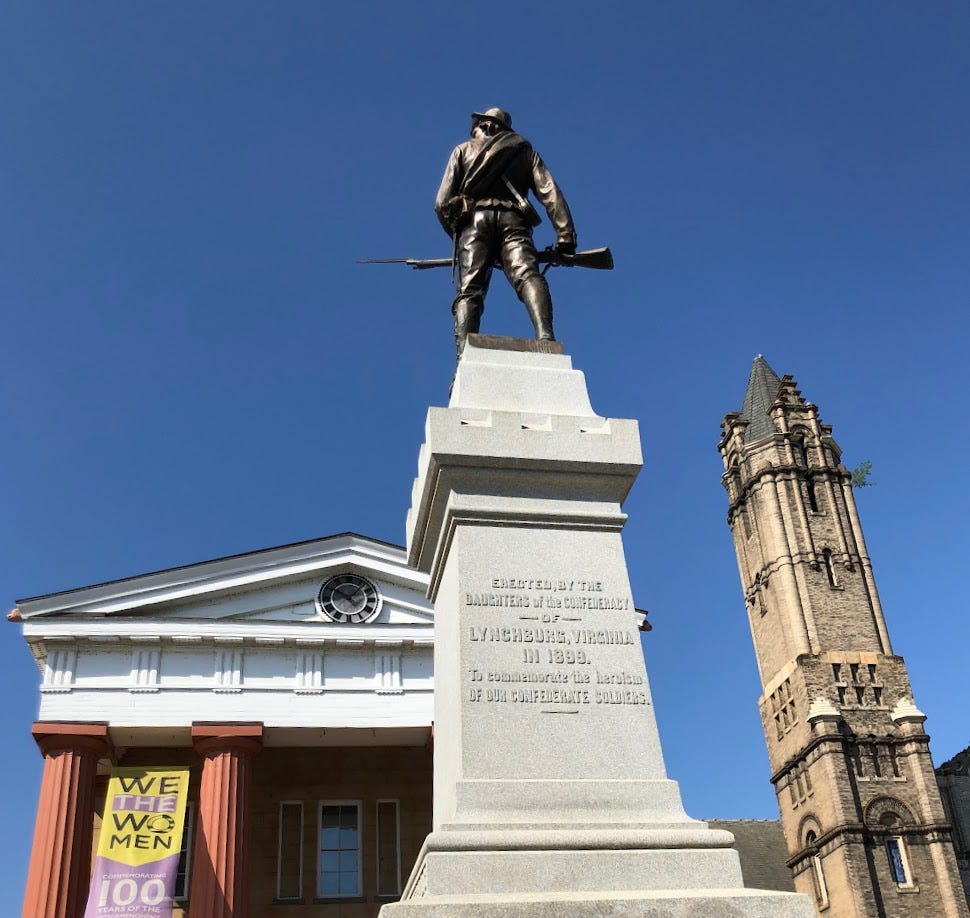Why a Bridge of Lament?
"We affirm that Black history is American history, without which we cannot understand our country’s fight for freedom or secure a more democratic future."
For the next month, as we prepare for this year’s bridge crossing, look for essays from our archives that will lead us to Juneteenth. Bridge of Lament stands with leading civil rights groups affirming that “we must protect [Black] history not just in books, schools, libraries, and universities, but also in museums, memorials, and remembrances that are sites of our national memory.”1 For the last twenty-five years, leaders and organizers in Lynchburg have engaged the community in a rich Juneteenth tradition of song, dance, readings, and community service projects. Let’s join them again.

Memorial Bridge is a quarter mile-long viaduct across the James River, linking rural Piedmont counties to the city of Lynchburg, Virginia. As you cross the bridge and enter the city from the northern bank, two hundred and fifty years of Lynchburg skyline spread across the horizon. Looking down, you see the previous bridge’s abutment protruding above the water’s surface and realize this bridge is only the most recent iteration of many crossings on the river. John Lynch, for whom the bridge is named, established the original crossing in 1757 as a ferry service. It didn’t take long for the little village called Lynch’s Ferry to grow into a town, and soon the river turned from barrier to profit as it carried tobacco to market from the factories and warehouses of the growing town, now the city of Lynchburg.
On the skyline above the crossing, the old courthouse sits small but prominent behind he commercial high rises and between historic church spires. For a time in the city’s history, the courthouse bell rang every night, accompanying the close of the day’s business and announcing curfew for all the Black residents—both enslaved and free. It was an audible reminder of who profited in this place and who met a barrier.
Crossing the bridge and ascending toward the courthouse brings you to Monument Terrace. The 139 stairs rise through landings with sculptures, plaques, and monuments honoring fallen soldiers in every major American war. At the top of the steps, the focal point of the climbing terraces, a Confederate soldier stands guard over the doors of the Courthouse. The Daughters of the Confederacy erected the statue, titled “Our Confederate Soldiers,” in 1899.
Memorializing events and people of the past gives purpose to the present. What values does this Confederate soldier reflect? What is the effect of remembering white soldiers, but not the Black men and women the Civil War was conducted to keep enslaved? Who is included and who is left out of the word “Our”? Just a couple years after “Our Confederate Soldiers” was placed in front of the courthouse, Lynchburg instituted the poll tax to disenfranchise Black voters. As Lynchburg’s Virginia State Senator Carter Glass explained it, the goal was “to remove every [African American] voter who can be gotten rid of, legally, without materially impairing the numerical strength of the white electorate.”2 Like the curfew bell, the poll tax was another barrier imposed by white supremacy.
The term “white supremacy” may evoke uncomfortable or uncertain feelings in white readers. Many confine the concept to explicit extremism—white hoods and burning crosses—but authors Duke Kwon and Greg Thompson define it more broadly as the “social supremacy of people characterized as White.”3 It is promotion and valuation of white identity above non-white identity, whether consciously or subconsciously, by economic, political, and social means. As with many caste systems, this social promotion is often invisible to the beneficiary group itself. Yes, white supremacy included “its embodiment, slavery,” but its legacy also endures through modern times.
What is the effect of remembering white soldiers and intentionally forgetting the Black men and women the Civil War was conducted to keep enslaved? Who is included and who is left out of the word “Our”?
The city of Lynchburg named its latest bridge after John Lynch to remember our forebears and reflect their values of pioneerism, commerce, and progress. Local African Americans know the barriers to those values, and they know that John Lynch, while manumitting his slaves according to the conscience of his Quaker faith, also promoted sending them back to Africa. A proper crossing of his bridge exposes not only the barriers of white supremacy that the Black community here has always known, but also the exclusion and removal that have come with it. Another bridge, that of awareness and lament, is needed to carry the white community over its barrier of ambivalence to white supremacy.
Once again, we will begin our crossing on Juneteenth, marking the day in June 1865 when word came to the enslaved in Galveston, Texas, that they were free. History remembers these Black men and women as among the last liberated people of the country, two months after General Lee’s surrender just outside of Lynchburg, in Appomattox. Our project is to build a bridge, starting on Juneteenth—a day that wasn’t in the consciousness of most white Americans until recently—and ending on July 4th, the day we celebrate our nation’s love for freedom and independence.
Along the way, we will celebrate Black History in Lynchburg, told by our community of writers sharing their stories of racialization, justice, and civil rights, continuing the efforts of many Black heroes of the past and their allies.
To span the immense river of history and the barriers of modern ambivalence, this bridge must necessarily hold both lament and celebration. And it must be a bridge that those living in and around Lynchburg can traverse together; there is healing in that, and perhaps even hope for redress. May our written words, markers, and icons in this space properly focus our minds' eye and carry us across to the best principles of our city and state’s founding: life, liberty, and the pursuit of happiness and safety4 — not only for ourselves, but for each other.
“Racial inequality remains real; if we are not able to understand it, tell its history, and honor those who have risked everything to solve it, then we lose our capacity to carry the legacy, brilliance and resilience of these freedom fighters in our lives and to future generations. Democracy is a constant struggle, and the erasure of our history prevents us from fighting to preserve it” (Action Network).

Reparations: A Christian Call for Repentance and Repair, Brazos Press, 2021. Pg 60-61.




